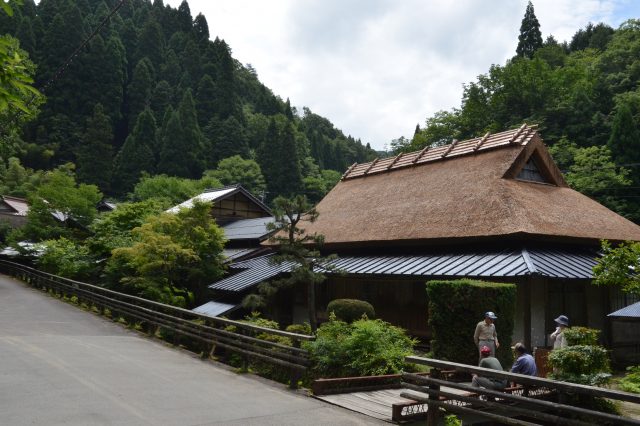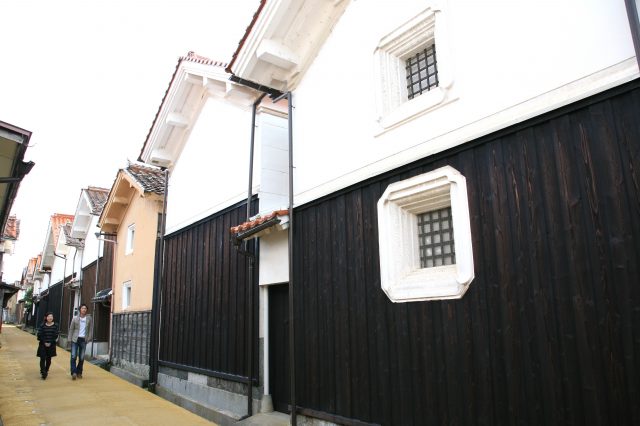Cultural Properties-Snow-
Wind and Snow
Following the swift currents of the river upstream to the Chugoku Mountains, which gave birth to the sand of the Tottori Sand Dunes, you will reach the Yamasato district, covered by heavy snow blankets in winter.

Hyonosen-Ushiroyama-Nagisan Quasi-National Park (Tottori Prefecture, Tottori City/Iwami Town/Wakasa Town/Chizu Town/Yazu Town & Hyogo Prefecture, Kami Town/Shinonsen Town)
A steep mountain range that rises to an altitude of over 1,000 meters, including Mt. Hyono — the tallest mountain in Hyogo Prefecture. These mountains catch the seasonal winds that blow over land in winter, causing "mountain snow" to fall. This heavy snow brought by the wind has nurtured an environment of hearty cedar trees, and given rise to the development of forestry in the area.

Chizu Forest Landscape (Tottori Prefecture, Chizu Town)
On Mt. Okinoyama, cedar tree seeds are spread by branches weighed down by snowfall. During the Edo period, this natural property of the trees led to the establishment of seedling care and reforestation for both natural and man-made forests. Small mountain villages of thatched huts can still be seen here today.

Chizu-cho Itaibara Preservation District for Groups of Historic Buildings (Tottori Prefecture, Chizu Town)
A mountain village that, at an altitude of 430 meters, was hidden by cedar forests and had no traffic routes except a narrow 1.8-meter-wide old road called "Rokushakudo." There are the remains of old houses with thatched roofs, waterwheels, charcoal-grill huts, and other places where people lived, still protected by cedar forests.

Sugi Shrine (Tottori Prefecture, Chizu Town)
A shrine where cedar trees are deified and that was built by the townspeople with their own funds. Its triangular shape is symbolic of the cedar itself.

Residence of the Ishitani Family (Tottori Prefecture, Chizu Town)
A mansion in an Edo period lodging-town. Cedar is heavily used in its construction, and its grounds of almost 10,000 square meters contain workshops for those who worked on the mountain, an atrium overlooking giant wood beams holding up the roof, the residence for the owner of the mountain with over 40 rooms, and seven storehouses.

Residence of the Yabe Family (Tottori Prefecture, Yazu Town)
A residence for the village head during the Edo period, its refined architecture gives the appearance of an upper-class farming family. The thatched roof and thick pillars made it very well equipped against snow.

Main Residence of the Ota Family, New Building, Nagaya-mon Gate (Tottori Prefecture, Yazu Town)
Overlooked by the Chugoku Mountains, this residence has a main building, new building, and several earthen storehouses. Many features were built especially for the snowy climate, such as the windows being high up on the walls to still let in sunlight when it snows.

Residence of the Sanbyakuda Family (Tottori Prefecture, Wakasa Town)
The residence for an old family that served as village head during the Edo period in the furthest outskirts of the Inaba region (modern-day eastern Tottori). Overlooked by the Chugoku Mountains, its thatched roof and thick pillars were constructed to protect against the snowy climate.

Wakasa Railway Wakasa Station Building, Platform, Railway Turntable, and 23 other Cultural Assets (Tottori Prefecture, Wakasa Town/Yazu Town)
This forest railway opened in 1930 as a transportation route for cedar wood and charcoal. Wooden station buildings and stone platforms remain now as they were during the time it opened. At Wakazakura Station, the last stop, there's a hands-on steam engine experience for the manual railway turntable there.

Kariya Dori Street (Tottori Prefecture, Wakasa Town)
The eaves of the houses extend outward 1.2 meters here, creating a covered street for people to pass through even in snow. An ingenious construction made by those who lived with the snow, it is still used even today. The waterways flowing along the streets help with snow removal and act as water reserves in case of fire.

Main Residence of the Kishima Family (Tottori Prefecture, Wakasa Town)
Originally built in 1887, after the great fire of 1885, as part of an official resolution that laid out the restoration plan for Wakasa lodgings. It has eaves to protect from snow and rain, as was typical for the era, and today it is used as a rest area and meeting place.

Storehouse Street (Tottori Prefecture, Wakasa Town)
These earthen storehouses, with red-tiled white walls and siding to resist snow, extend over 300 meters long. They were originally set up following the great fire of 1885 as a resident-led city initiative, and having them all lined up together prevented snow from tumbling into the street.

Fudoin Iwayado (Tottori Prefecture, Wakasa Town)
A stage that was built in a natural cave peeking out from between large cedar trees. Believed to have been built during the Nanboku-cho period (1336-1392), the cave was carved out from erosion due to melting snow. It is a place believed to have been a home to the gods by the people who lived there.
